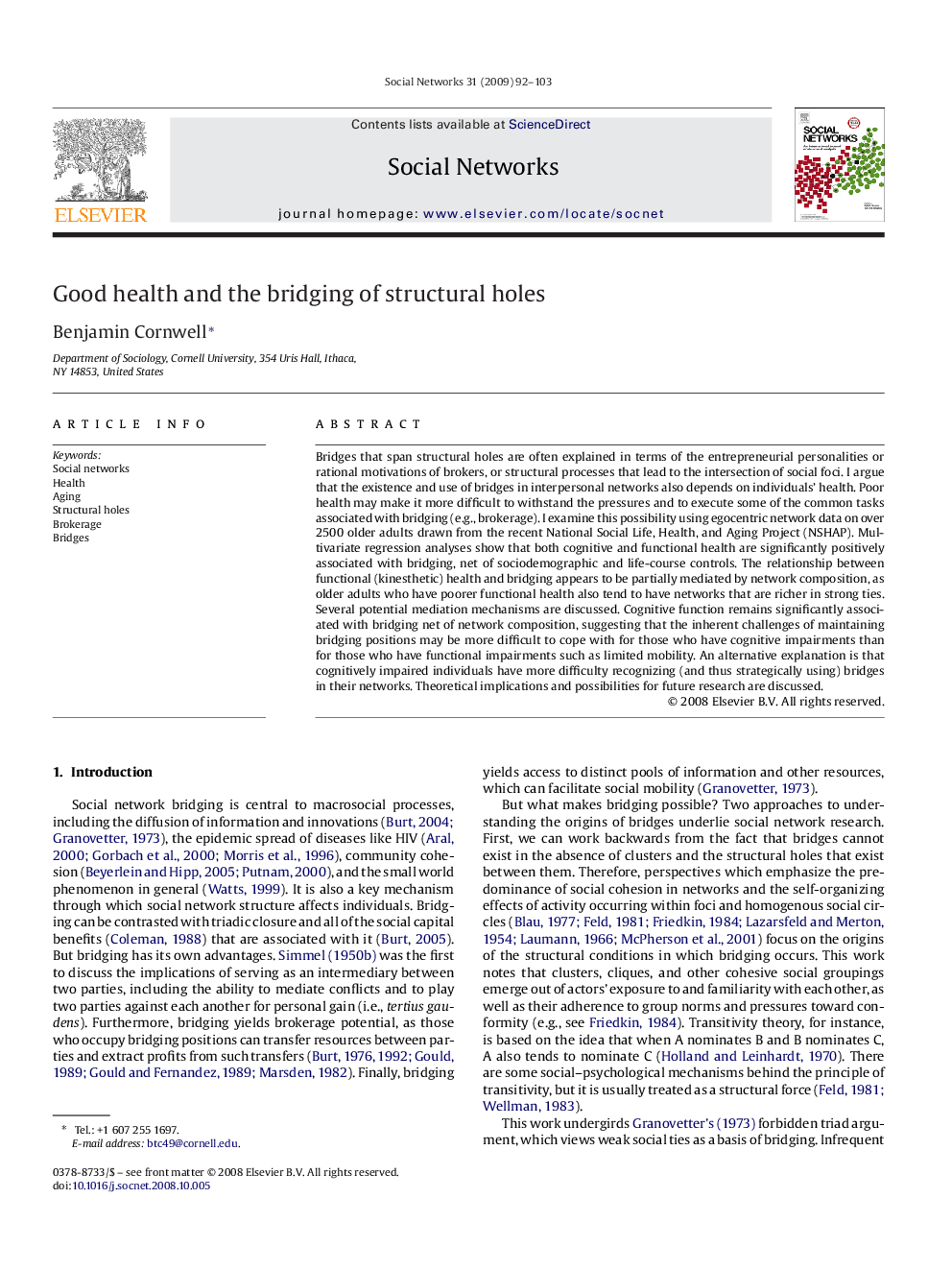| کد مقاله | کد نشریه | سال انتشار | مقاله انگلیسی | نسخه تمام متن |
|---|---|---|---|---|
| 1129427 | 955255 | 2009 | 12 صفحه PDF | دانلود رایگان |

Bridges that span structural holes are often explained in terms of the entrepreneurial personalities or rational motivations of brokers, or structural processes that lead to the intersection of social foci. I argue that the existence and use of bridges in interpersonal networks also depends on individuals’ health. Poor health may make it more difficult to withstand the pressures and to execute some of the common tasks associated with bridging (e.g., brokerage). I examine this possibility using egocentric network data on over 2500 older adults drawn from the recent National Social Life, Health, and Aging Project (NSHAP). Multivariate regression analyses show that both cognitive and functional health are significantly positively associated with bridging, net of sociodemographic and life-course controls. The relationship between functional (kinesthetic) health and bridging appears to be partially mediated by network composition, as older adults who have poorer functional health also tend to have networks that are richer in strong ties. Several potential mediation mechanisms are discussed. Cognitive function remains significantly associated with bridging net of network composition, suggesting that the inherent challenges of maintaining bridging positions may be more difficult to cope with for those who have cognitive impairments than for those who have functional impairments such as limited mobility. An alternative explanation is that cognitively impaired individuals have more difficulty recognizing (and thus strategically using) bridges in their networks. Theoretical implications and possibilities for future research are discussed.
Journal: Social Networks - Volume 31, Issue 1, January 2009, Pages 92–103